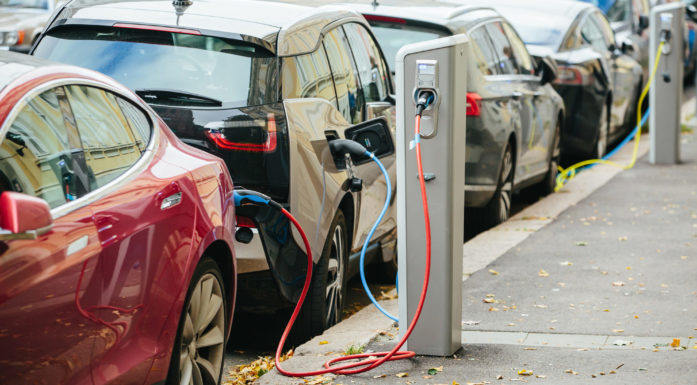Is it really sustainable for everyone to own an electric car?
Norway is often seen as a shining example of how a country can make its transportation greener by encouraging consumers to purchase electric cars. But Norway’s approach isn’t for everyone — and it may be hampering the country’s efforts to make its transport solutions truly climate friendly.
Norway is the country with the highest market share of electric cars in the world – 2020 was the year that the sales of electric passenger vehicles exceeded sales of all other types of passenger vehicles. And this trend is continuing. The Norwegian Parliament has decided that all news cars sold beginning in 2025 should be zero-emission vehicles.
In view of this success story, in November 2022 “over 40 policy makers and climate, transport and energy experts from all three Baltic countries visited Oslo […] for a study visit focusing on the development of sustainable mobility solutions and electric transport infrastructure in alignment with Paris Agreement and the European Green Deal.”
Why did these Baltic policy makers and experts come to Norway, and what can they learn from Norway’s decisions and priority setting about sustainable mobility? It’s clear that if the goal is to increase electric vehicle sales, Norway has shown how it can be done. However, we believe a mobility transition that is truly green requires policies that go beyond substituting combustion-engine cars with electric cars.
Government incentives worked — to sell more cars
Several policies implemented by the Norwegian government more than three decades ago are what made of the country’s transition to electric cars a reality. These were mainly financial incentives such as tax exemptions and reductions, free municipal parking, reduced road tolls and ferry charges, and requirements for public procurement that have meant that any cars purchased beginning in 2022 must be electric. Norwegians have been incentivized to purchase electric cars as early as 1990.
The massive focus on EVs in Norway has come at the expense of infrastructure and a built environment that could cater to cycling and walking. Other countries can avoid this trap by looking at the big picture.
Now, the Norwegian Electric Vehicle Association is worried that Norway will not be able to achieve its target of 100% “zero-emission cars” by 2025 because many financial incentives have been reduced or eliminated.
However, analyses show that the people who benefited most from the tax reduction for electric cars were mostly those with higher incomes. So perhaps the changing incentives won’t have that much of an effect on sales.
That may be especially true in view of another trend: Norwegians are buying bigger and bigger electric cars. In spite of this trend, buying an electric car is still considered a positive behaviour to achieve Norway’s climate goals. In fact, in Norwegian society, owning an electric car is considered sustainable and something to be proud of. But at what cost?
More electric cars — but bigger cars too
Electric cars seem to provide the solution to the problem of the “car” as a tool for individual mobility. But this ignores the bigger picture.
At the meeting with the Baltic policy makers in Oslo, the main argument for why there is so much enthusiasm for transitioning to electric mobility is that consumers get the opportunity to choose their favourite car brands and models – just with electric drive.
The Norwegian goal doesn’t prevent people from buying their favourite cars — they just have to be electric. But as noted above, Norwegians are buying bigger and heavier cars with longer ranges. SUVs are becoming increasingly popular.
Zero-emission during use
While it’s certainly true that electric cars are “zero-emission” during their use phase, they still require many resources for production, including the need for materials such as lithium, nickel, cobalt and copper to make batteries — all of which must be mined.
At the same time, more and more cars — whether electric or not — lead to increased urban congestion. Over the last few years, as the share of electric cars has increased, the total number and size of combustion-engine cars has also increased.
Society has travelled this road before
The reality is that a simple transition to EVs doesn’t solve the larger challenges posed by the old automobile regime. Society has travelled this road before.
Substituting one “cleaner” technology for another does nothing to address the problems posed by cars in general.
Among these problems are rush hour congestion in bus lanes and limited parking spaces, urban dust pollution from asphalt and microplastics from car tires, emissions from every stage of the EV value chain, the increasing demand for resources and the mounting waste problem of used EV batteries.
Moreover, EVs also strain electricity grids in new ways, while some of materials needed to make batteries, such as cobalt, come from countries where there are severe human rights violations, hazardous working conditions and use of child labour.
In short, is it really sustainable if everyone has an electric car?
Other options overlooked, underfunded
The Norwegian government’s financial support for buying bicycles (electric or not) is insignificant – especially compared to subsidies for cars and their infrastructure.
Norwegian government funding for busses is being cut, which the Norwegian Institute of Transport Economics (TØI) warned could lead to a death spiral for public transportation. The reliance on technological substitution that EVs represent is undermining the transition to less resource-intensive mobility modes here in Norway.
So, how desirable is it that other countries follow Norway’s EV example?
Clearly, EVs can be a part of the solution, but the massive focus on EVs in Norway has come at the expense of infrastructure and a built environment that could cater to cycling and walking. Other countries can avoid this trap by looking at the big picture.
Norway needs to start incentivizing non-ownership options, such as providing tax deductions for bus passes — or even free passes — improving vehicle sharing schemes, and strengthening public transport. And in some places, this is actually happening. Stavanger recently introduced free public transport for their residents.
Strong policies work, but…
The journey of electric car adoption in Norway is a fantastic example of the “socialization process of technology” in the local Norwegian context. Strong policies do indeed work, but one-eyed policies will reproduce many challenges from the past.
The Norwegian way should not be seen as a universal gold standard. In fact, it could be harmful for other countries, such as the Baltics, to blindly follow this example. What is more generally true is that the world needs policies that holistically address environmental, social and climate concerns. Only in this way can we ensure a comprehensive approach to greener transport that’s both good for the planet and ensures that people can get to where they need to go.





